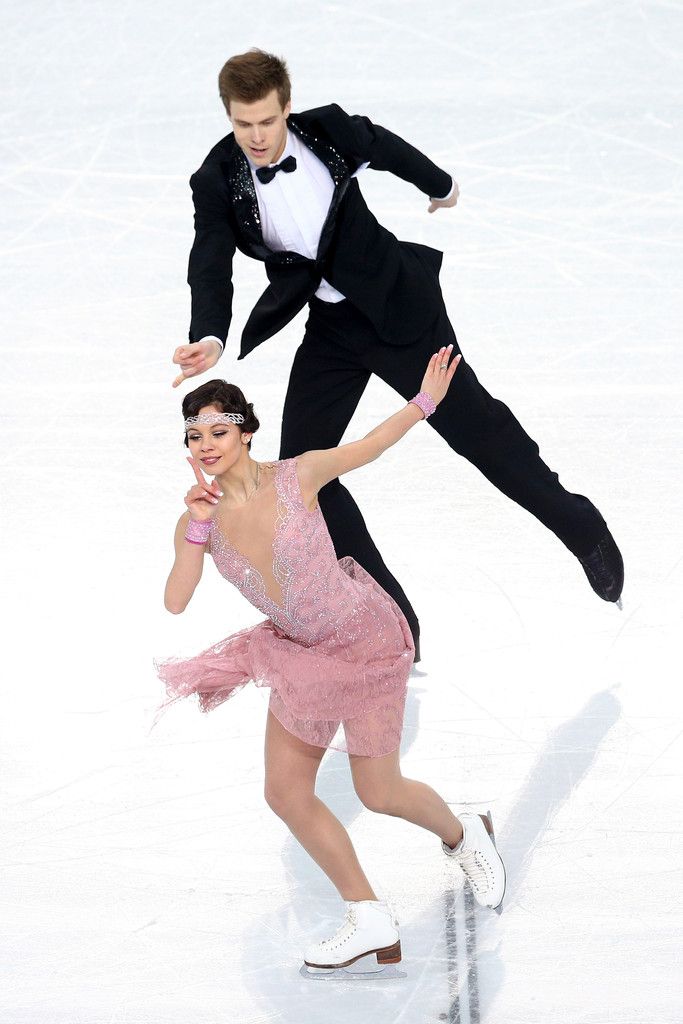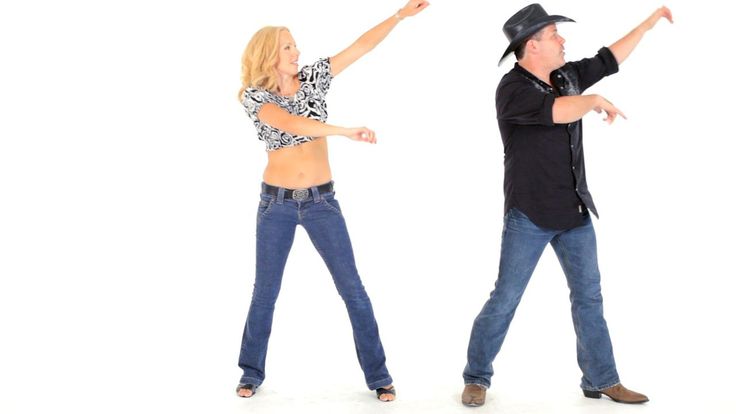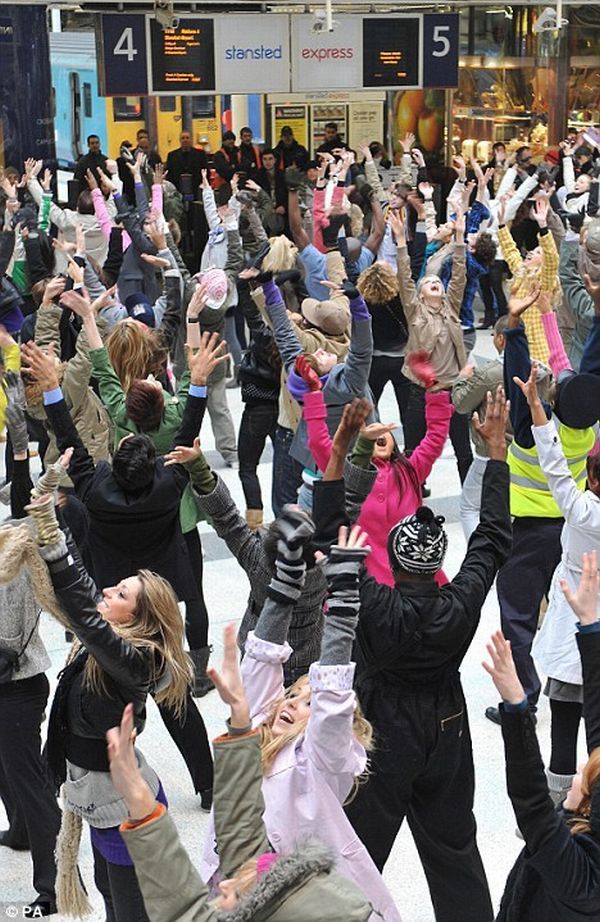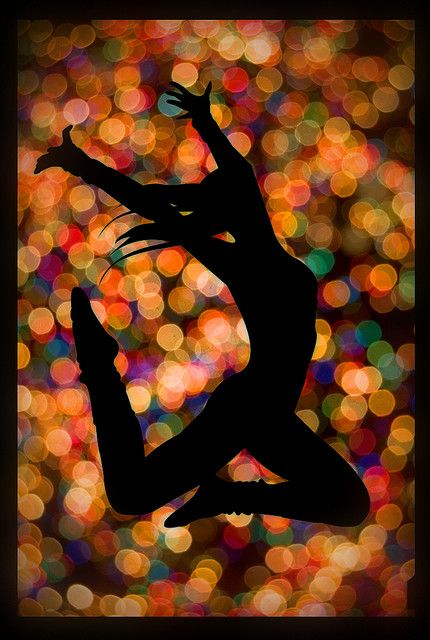How to dance like an idiot
The Importance of Dancing Like an Idiot
One of the strangest but also most intriguing and redemptive things that humans get up to, in almost any culture one cares to study, is occasionally to gather in large groups, bathe in the rhythmic sounds of drums and flutes, organs and guitars, chants and cries, and move their arms and legs about in complicated and frenzied ways, losing themselves in the bewilderment of a dance. Dancing has a claim to be considered among the most essential and salutary activities we ever partake in. Not for nothing did Nietzsche, a painfully inhibited figure in day to day life, declare ‘I would believe only in a God who could dance’ (a comment that stands beside his equally apodictic pronouncement: ‘Without music, life would be a mistake.’)
But dancing is at the same time an activity that many of us, arguably those of us who might most need to do it, are powerfully inclined to resist and deep down to fear. We stand on the side of the dance floor appalled at the possibility of being called to join in, we attempt to make our excuses the moment the music begins, we take pains that no one will ever, ever see our hips unite with a beat.
The point here is definitely not to learn to dance like an expert, it is to remember that dancing badly is something we might actually want to do and, equally importantly, something that we already well know how to do to – at least to the level of appalling proficiency we need to possess in order to derive key benefits.
In almost all cultures and at all points of history (except oddly enough perhaps our own), dancing has been widely and publically understood as a form of bodily exercise with something very important to contribute to our mental state. Dancing has had nothing to do with dancing well, being young or revealing one’s stylishness. Summed up sharply we might put it like this: dancing has been valued for allowing us to transcend our individuality and for inducing us to merge into a larger, more welcoming and more redemptive whole.
The Ancient Greeks were for the most part committed worshippers of the rational mind. Their foremost God, Apollo, was the embodiment of cool reason and disciplined wisdom. However, the Greeks understood – with prescience – that a life devoted only to the serenity of the mind could be at grave risk of desiccation and loneliness. And so they balanced their concern with Apollo with regular festivals in honour of a quite different God, Dionysus, a god that drank wine, stayed up late, loved music – and danced.
However, the Greeks understood – with prescience – that a life devoted only to the serenity of the mind could be at grave risk of desiccation and loneliness. And so they balanced their concern with Apollo with regular festivals in honour of a quite different God, Dionysus, a god that drank wine, stayed up late, loved music – and danced.
A break from individualism and reason: Dionysius (also known as Bacchus to the Greeks and Romans) leading a dance. Bouguereau, The Youth of Bacchus, 1884
The Greeks knew that the more rational we usually are, the more important it is – at points – to fling ourselves around to the wild rhythms of pipes and drums. At the festivals of Dionysius, held in Athens in March every year, even the most venerable and dignified members of the community would join into unrestrained dancing that, irrigated by generous amounts of red wine, lasted until dawn.
A word often used to describe such dancing is ‘ecstatic’. It’s a telling term. Ecstatic comes from two Latin words: ex (meaning apart) and stasis (meaning standing) – indicating a state in which we are symbolically ‘standing apart’ from ourselves – separated from the dense, detailed and self-centered layers of our identities which we normally focus on and obsess over and reconnected with something more primal and more necessary: our common human nature. We remember, through a period of ecstatic dancing, what it is like to belong, to be part of something larger than ourselves, to be indifferent to our own egos – to be reunited with humanity.
Ecstatic comes from two Latin words: ex (meaning apart) and stasis (meaning standing) – indicating a state in which we are symbolically ‘standing apart’ from ourselves – separated from the dense, detailed and self-centered layers of our identities which we normally focus on and obsess over and reconnected with something more primal and more necessary: our common human nature. We remember, through a period of ecstatic dancing, what it is like to belong, to be part of something larger than ourselves, to be indifferent to our own egos – to be reunited with humanity.
This aspiration hasn’t entirely disappeared in modernity – but it’s been assigned to very particular and woefully selective ambassadors: the disco and the rave. These associations point us in unhelpful directions: towards being cool, a certain age, wearing particular clothes, liking a certain kind of often rather arduous music. Such markers of an elite, knowing crowd reinforce, rather than dismantle, our tendencies towards isolation and loneliness.
We need, urgently, to recover a sense of the universal benefit and impact of dancing. But the greatest enemy of this is fear, and in particular, the fear – as we may put it – that we will look ‘like an idiot’ in front of people whose opinion might matter. The way through this is not to be told that we will in fact appear really rather fine and, with a bit of effort, very far from idiotic. Quite the opposite; we should accept with good grace that the whole point of redemptive, consoling, cathartic communal dancing is a chance to look like total, thoroughgoing idiots, the bigger the better, in the company of hundreds of other equally and generously publically idiotic fellow humans.
We spend a good deal of our time fearing – as if it were a momentous calamity that we did not even dare contemplate in daylight – that we might be idiots and holding back from a host of important aspirations and ambitions as a result. We should shake ourselves from such inhibitions by loosening our hold on any remaining sense of dignity and by accepting frankly that we are – by nature – of course completely idiotic, great sacks of foolishness that cry in the night, bump into doors, fart in the bath and kiss people’s noses by mistake – but that far form being shameful and isolating, this idiocy is in fact a basic feature of our nature that unites us immediately with everyone else on the planet.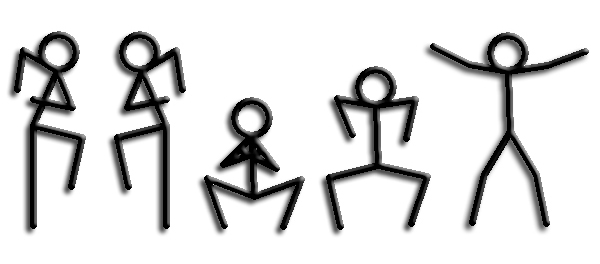 We are idiots now, we were idiots then, and we will be idiots again in the future. There is no other option for a human to be.
We are idiots now, we were idiots then, and we will be idiots again in the future. There is no other option for a human to be.
Dancing provides us with a primordial occasion on which this basic idiocy can be publicly displayed and communally celebrated. On a dance floor filled with comparable idiots, we can at last delight in our joint foolishness; we can throw off our customary shyness and reserve and fully embrace our dazzling strangeness and derangement. An hour of frantic jigging should decisively shake us from any enduring belief in our normalcy or seriousness. We will no longer be able to bully others, persuade them of our superiority, humiliate them for their mistakes or pontificate at length on weighty matters. We will no longer worry how others see us or regret a few things we said to intimidating strangers. The gentle aches in our limbs and our memories of our moves will remind us of anchoring facts that will guarantee our ongoing sanity and kindness.
Whenever we have the chance to invite others around, especially very serious people by whom we’re intimidated or whom we might be seeking to impress, we should remember the divine Dionysus and dare, with his wisdom in mind, to put on Dancing Queen, I’m so excited or We are Family. Knowing that we have Nietzsche on side, we should let rip with a playlist that includes What a Feeling, Dance with Somebody and Hey Jude. We should lose command of our normal rational pilot selves, abandon our arms to the harmonies, throw away our belief in a ‘right’ way to dance or indeed to live, build the intensity of our movements to a frenzy, gyrate our heads to empty them of their absurd worries, forget our jobs, qualifications, status, achievements, plans, hopes and fears – and merge with the universe or at least its more immediate representatives, our fellow new mad friends, before whom the disclosure of idiocy will be total.
Knowing that we have Nietzsche on side, we should let rip with a playlist that includes What a Feeling, Dance with Somebody and Hey Jude. We should lose command of our normal rational pilot selves, abandon our arms to the harmonies, throw away our belief in a ‘right’ way to dance or indeed to live, build the intensity of our movements to a frenzy, gyrate our heads to empty them of their absurd worries, forget our jobs, qualifications, status, achievements, plans, hopes and fears – and merge with the universe or at least its more immediate representatives, our fellow new mad friends, before whom the disclosure of idiocy will be total.
Looking like an idiot shouldn’t be a risk: it’s the point.
Around us might be a formally shy accountant, an efficient dental nurse or a white haired school principal bending and flinging their arms in the air, throwing their heads back, contorting their bodies. After a few songs, something astonishing will begin to happen: it won’t matter any more that we said a slightly out of place thing in a meeting two weeks ago, that we haven’t yet met the love of our lives or that we still don’t understand very much at all.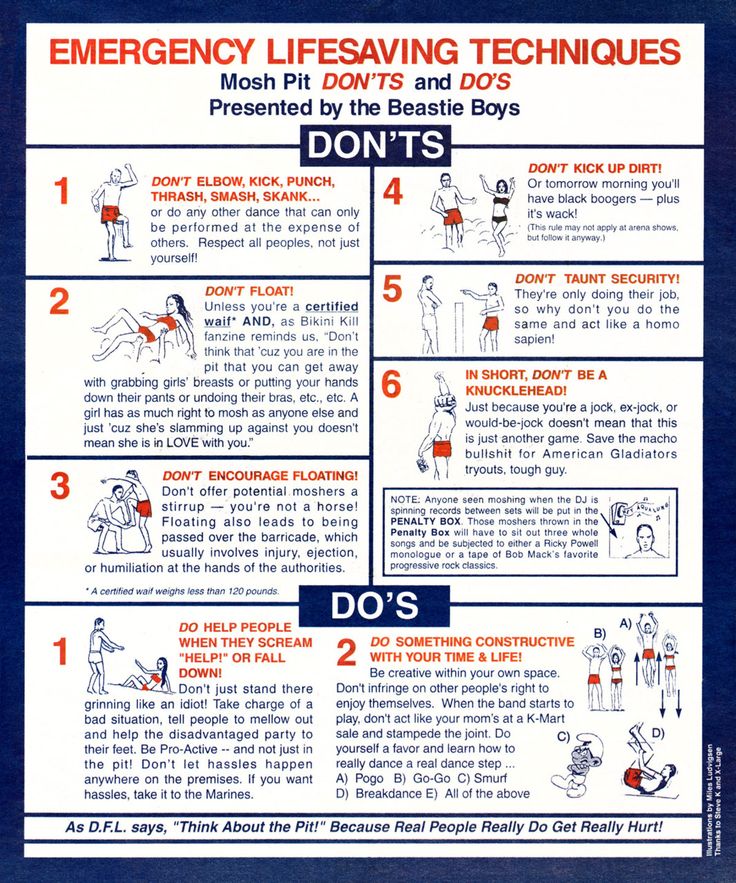 We will feel a part of something far more important than ourselves, a supportive community in which our individual errors and doubts will cease to weigh so heavily and punishingly upon us.
We will feel a part of something far more important than ourselves, a supportive community in which our individual errors and doubts will cease to weigh so heavily and punishingly upon us.
Through a dance, we glimpse a huge project: how we might more regularly experience ourselves as vulnerable in front of other people in order to become better friends to ourselves and more generous and compassionate companions to others. The true potential of dancing has for too long been abandoned by thoughtful people to stylish ambassadors who have forgotten the elemental seriousness of allowing themselves to be and look idiotic. We should reclaim the ecstatic dance and uninhibited boogie woogie for their deepest universal purposes: to reconnect, reassure and reunite us.
Sometimes When You Dance Like an Idiot Amazing Things Happen
I have loved this Youtube video, Leadership From a Dancing Guy, since I first saw it when a friend of mine posted it on Facebook a while back. It shows how it is the first followers and not the leader who create a movement. “The first follower transforms a lone nut into a leader.”
I have seen the theory of this video demonstrated in the past week. I have been plugging my crowdfunding project to get my next novel Identity Theft into print. I have to tell you that I have, much of the time, felt like an idiot. I was metaphorically dancing around, arms flailing, drawing attention to myself (and I’m not a drawing-attention-to-myself kind of gal). There were times when I felt like combination beggar and clown.
One of my writer friends Ronald L.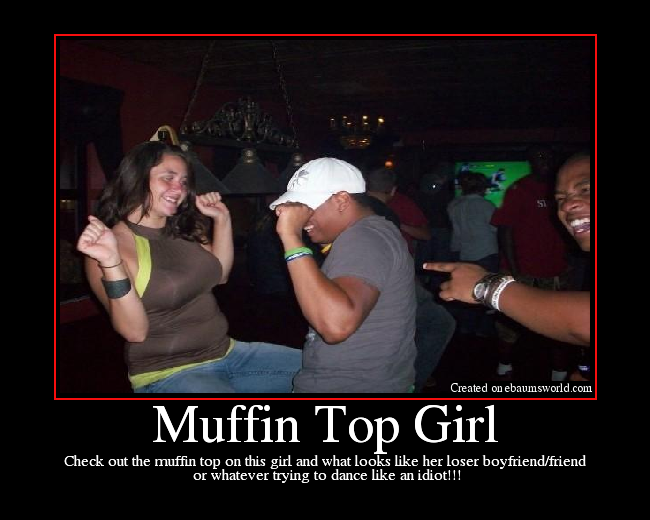 Herron, who maintains the blog Painting with Light, published some sobering and discouraging figures about the reach of social media.
Herron, who maintains the blog Painting with Light, published some sobering and discouraging figures about the reach of social media.
When you consider maybe half the people in a social network will actually see a posting (assuming they aren’t following so much stuff they don’t have time to read any of it), and maybe one percent of those who see it will respond, and about five percent of the responders will buy, you’ll understand why marketing types today use this formula to evaluate social media:
(followers) x (50% see it) x (1% pay attention) x (5 % buy it) = sales.
Using this as gospel, you can figure out what the outcome will be for any given social networking post. For the sake of example, I’ve chosen an audience following of 100,000 (I should be so lucky). It works out something like this:
100,000 x 50% x 1% x 5% = 25
You read that right.
Assuming you have something to sell, a posting to 100,000 followers on your social media site (your blog, the Twitter, the Book of Face, or whatever else you use) could possibly translate into 25 sales. Maybe.
Twenty-five. That’s it.
Considering all the time I spend on those sites, those numbers made me feel sick, too.
I have almost 2000 follows here. Another 1650 on The Twitter. Only about 53 on the Book of Face (I’m not real active there). I’m not at all sure about Pinterest or Tumblr or LinkedIn or any of the others I’m on and vaguely familiar with, so I won’t count them.
So let’s say it’s about 4000.
Let’s see … 4000 followers x 50% x 1% x 5% = 1.
Eek!
I read a lot of advice on how to have an effective crowdfunding campaign and it always said you have to keep plugging away. Don’t lose enthusiasm.
Don’t lose enthusiasm.
That is hard for a number of reasons. You’re afraid of driving away the friends and followers you do have with spam. You (ok, I) hate drawing attention to yourself and again, there is the person begging in a clown suit aspect. When the results fail to come quickly you’re inclined to hide in shame, remove your campaign post and say, “Sorry, I was only joking.”
But if you believe in your project and want to see it happen, you soldier on. You double down and dance even more wildly. (“All arms and legs and no control” as the world famous ballet dancer David Hallberg once uncharitably said of his student self.)
Then one day something amazing happens.
You can’t control it. You can’t make it happen. It just does. When you’ve nearly given up.
A couple of days ago Identity Theft suddenly jumped from 27% funded to 44% funded in a single day.
I didn’t know why until someone I know from church forwarded me an e-mail message that had been going around.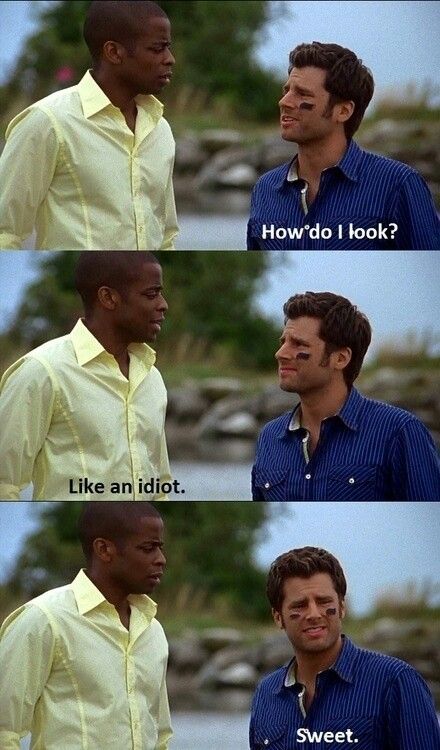 Two friends were spreading the word about the project and personally inviting their contacts to support it.
Two friends were spreading the word about the project and personally inviting their contacts to support it.
When they talk about crowdfunding on marketing sites and they use words like “activate your network” it doesn’t begin to describe what that means. I was deeply touched by my friends’ support. That simple act transformed my campaign from one that was floundering to one that has momentum and looks likely to reach its minimum goal (it is only $90 away) and maybe even to reach its upper goal. We are nearly half way there. (Pubslush is fairly unique among crowdfunding sites in that it allows authors to chose both a minimum and an upper funding goal. That way you can seek the bare minimum to do the project and not lose that backing, and you can also propose a figure to do the project as you would like and not cut so many corners.)
Sometimes when you dance like an idiot amazing things happen.
Like this:
Like Loading...
Posted in Book Marketing, Crowdfunding, Encouragement, Identity Theft (Novel) on by lauraleeauthor.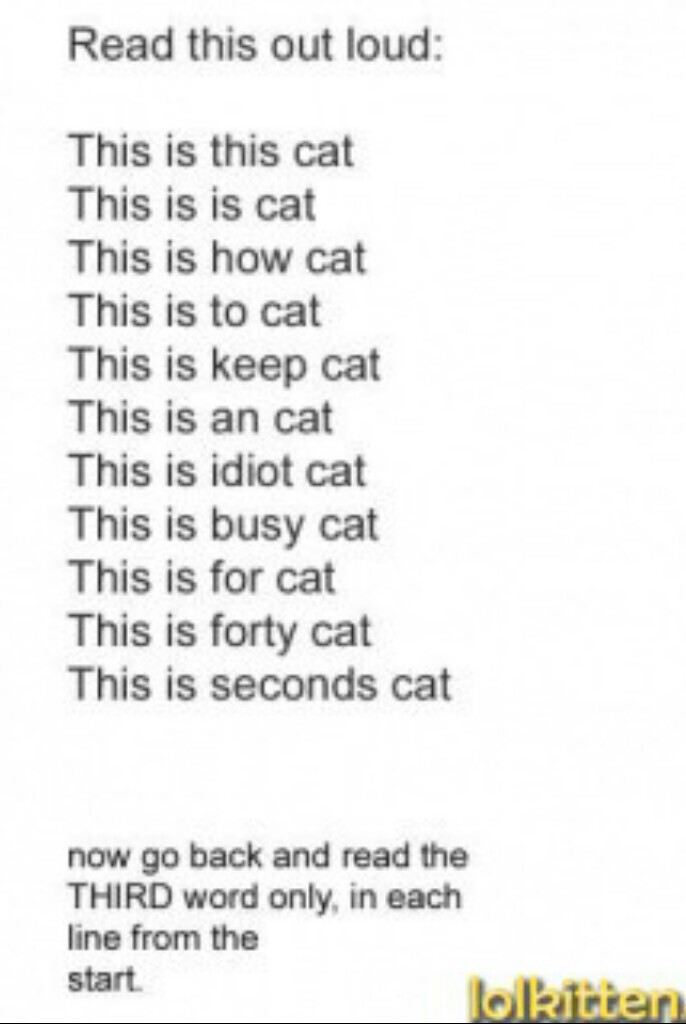 Leave a comment
Leave a comment Oscar’s Ghost
Identity Theft
Angel
Angel Audiobook
Other Books by Laura Lee
Recent Posts
- More Supernatural Adventures of the Wilde Circle
- Lord Alfred Douglas: Modern Mystic
- Positively
- Yucky Framing: Connecting With People in Tough Times is Good for Your Brand
- Pandemic Villanelle
Top Posts & Pages
- Give a Man a Mask and He'll Tell You the Truth?
- Each Man Kills The Thing He Loves
- The Happy End vs. The Noble End
- The Invisible Famine in the Parable of the Prodigal Son Part II
- Oscar Wilde's Tomb: Another Oscar's Ghost Outtake
Archives
Archives Select Month September 2022 April 2022 February 2022 March 2021 October 2020 May 2020 April 2020 February 2020 October 2019 September 2019 August 2019 May 2019 April 2019 March 2019 January 2019 December 2018 November 2018 October 2018 August 2018 July 2018 June 2018 May 2018 April 2018 January 2018 December 2017 November 2017 October 2017 September 2017 August 2017 July 2017 June 2017 May 2017 April 2017 March 2017 February 2017 January 2017 November 2016 October 2016 September 2016 August 2016 June 2016 May 2016 April 2016 March 2016 January 2016 December 2015 November 2015 October 2015 September 2015 August 2015 July 2015 June 2015 May 2015 April 2015 March 2015 February 2015 January 2015 December 2014 November 2014 October 2014 September 2014 August 2014 July 2014 June 2014 May 2014 April 2014 March 2014 January 2014 December 2013 November 2013 October 2013 September 2013 August 2013 July 2013 June 2013 May 2013 April 2013 March 2013 February 2013 January 2013 December 2012 November 2012 October 2012 September 2012 August 2012 May 2012 April 2012 March 2012 February 2012 January 2012 December 2011 November 2011 October 2011 September 2011 August 2011 July 2011 June 2011 May 2011 April 2011 March 2011Why is it so important to dance like an idiot
Dancing is considered one of the most beneficial activities. Both physical, psychological and social. But we all know that there are two categories of "dancers". Some, at the very first sounds, the melodies begin to stomp, and swing to the beat, following the impulse, without hesitation start dancing. Others try to hide as far as possible from the dance floor and look with horror at the first category, praying that this fate will pass them. Both sides cannot understand each other. The first ones are perplexed as to what is the reason for the embarrassment. And the second ones are surprised how this idea can give pleasure at all. Often the main justification is phrase "I don't dance well." Why is this self-deception?
Both physical, psychological and social. But we all know that there are two categories of "dancers". Some, at the very first sounds, the melodies begin to stomp, and swing to the beat, following the impulse, without hesitation start dancing. Others try to hide as far as possible from the dance floor and look with horror at the first category, praying that this fate will pass them. Both sides cannot understand each other. The first ones are perplexed as to what is the reason for the embarrassment. And the second ones are surprised how this idea can give pleasure at all. Often the main justification is phrase "I don't dance well." Why is this self-deception?
The authors of the self-development project The Book of Life explain that it doesn't really matter how you dance. “Dancing” and “dancing well” are two different things, like “rest” and “work”. The main thing in dance is not how a person looks from the outside, but the favorable effect of the dance itself.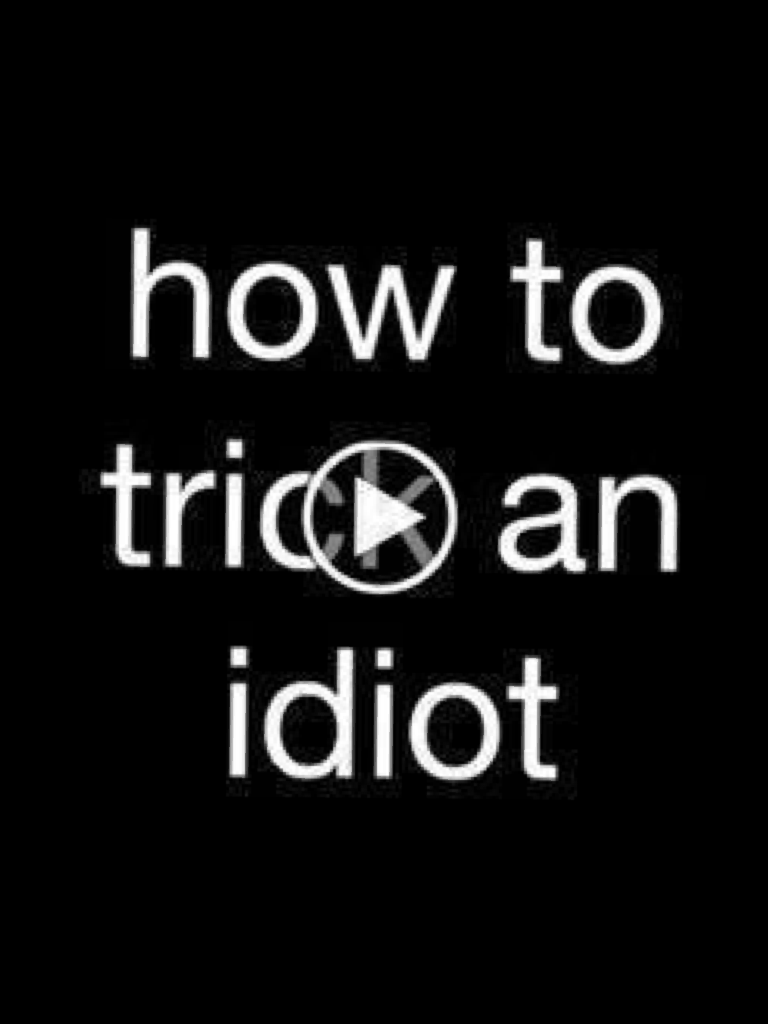 Any person, by default, "knows how" to dance well enough to feel this effect on himself.
Any person, by default, "knows how" to dance well enough to feel this effect on himself.
Dancing is a great cardio workout. All the muscles of the body work in the dance, coordination, balance improve, endurance, flexibility and even reaction speed increase. And then, dancing is fun and interesting. Getting yourself to dance regularly is much easier than forcing yourself to go for a run.
Research shows the positive effects dance has on the brain. It not only improves mood, but also enhances cognitive functions: recognition of visual stimuli and decision making. And that's not all: dancing reduces stress levels by stimulating the production of "happiness hormone" serotonin. They also contribute to the formation of new neural connections, especially in areas of the brain associated with behavior control, long-term memory and spatial orientation. Why do doctors use dance therapy in the treatment of patients with Parkinson's disease? Because it works.
It is very important to know that dance is a multi-dimensional activity. In addition to the physiological, it also has a psychological dimension. In almost all cultures and at all times, dance was perceived as a ritual, useful not only for the body, but also for the soul. Dance is something more significant and deeper than just rhythmic foot movements.
Even among the ancient Greeks, great connoisseurs of rationality, logic and discipline, music and dance were the most important part of their culture. Or rather, dances - there are two hundred of them, for all occasions: from weddings and funerals to religious ceremonies and wars. Probably, such a variety of dances was an attempt to find a balance between order and chaos. Probably, the ancient Greeks understood: the more rational and organized a person is, the more important it is for him sometimes to enter the element of spontaneity. Dancing was such an important part of their lives that even monuments were erected to the most skilled dancers. But this did not prevent the dance from remaining the most democratic occupation. At numerous ancient festivities, everyone danced.
But this did not prevent the dance from remaining the most democratic occupation. At numerous ancient festivities, everyone danced.
Dancing gives us the opportunity to bypass our ego control and feel like we are part of something bigger. Perhaps this is what we do not get in the modern world. According to some doctors, today we are experiencing an epidemic of loneliness. And the general self-isolation due to another epidemic only exacerbates the situation.
Dancing can help us regain a sense of community - establish a psychological connection with other people, the authors say The Book of Life . So what's stopping us? Fear of "looking like an idiot" . How to overcome this fear? Simple: it is enough to get rid of the dictates of desire "to look solid" . We need to understand and accept that the very essence of the healing dance that unites us with the world is to look as ridiculous as possible. The dumber the better. Isolation is no problem. Founder Dbrain.io Dmitry Matskevich dances with friends online in self-isolation to relieve stress - and no one feels ridiculous.
Isolation is no problem. Founder Dbrain.io Dmitry Matskevich dances with friends online in self-isolation to relieve stress - and no one feels ridiculous.
“Look worthy”, “inspire respect” are far-fetched things. If we discard them, it turns out that there is a lot of foolishness in each of us - nature made us so. We secretly cry at night, stumble upon jambs, break through closed doors, stumble out of the blue, fall, and when we try to leave beautifully, we laugh at ourselves, hiccupping at a crucial moment. Every day we do a lot of stupid things.
This is an integral part of our essence, which unites humanity. The absence of absurdity in our species is simply not provided. So dance is just an opportunity to publicly demonstrate (and even celebrate) one of the human traits, and there is no way to do it right or wrong.
During the dance, we run a personal development project. And by refusing to dance in order to save face, we succumb to fear of others. In order not to feel vulnerable to others, it is important to realize how closely we are connected with them. The main task of the dance is not to show the beauty and flexibility of your body. Its real potential lies in its ability to connect people, give us confidence and erase artificial boundaries.
In order not to feel vulnerable to others, it is important to realize how closely we are connected with them. The main task of the dance is not to show the beauty and flexibility of your body. Its real potential lies in its ability to connect people, give us confidence and erase artificial boundaries.
Source: reminder*
Why is it so important to at least sometimes dance like an idiot
Worldview
4/15/2020
Healthy idiocy is an integral part of our essence, which unites all people on the planet. Its absence in our species is simply not envisaged
Cover photo: Dance Of Fools – facsimile of a Miniature In Manuscript of the 13th Century in the Bodleian Library of Oxford
Dance is more than a way to show the beauty of the body. Perhaps it is that part of our "I", which does not let us dance when the music sounds, prevents us from living in harmony with the world and those around us.
Perhaps it is that part of our "I", which does not let us dance when the music sounds, prevents us from living in harmony with the world and those around us.
With this publication, we continue the series of essays on the meaning of life and ideas that explain how the world and man work. The previous two issues can be read here and here.
💬
Dancing is probably one of the most beneficial activities. Not only physical, but psychological and social. However, according to the dance profile, people are divided into two categories. Some begin to stomp, shake their heads to the beat at the first sounds of music and, following the impulse, start dancing without hesitation. Others look at the dancers with horror, pray to themselves that this cup will pass them, and always check before parties if there are dances planned. Dancing and complexing each other do not understand. What is there to be ashamed of, the first ones are perplexed. Why force people to move and why it should be fun at all, the latter are surprised.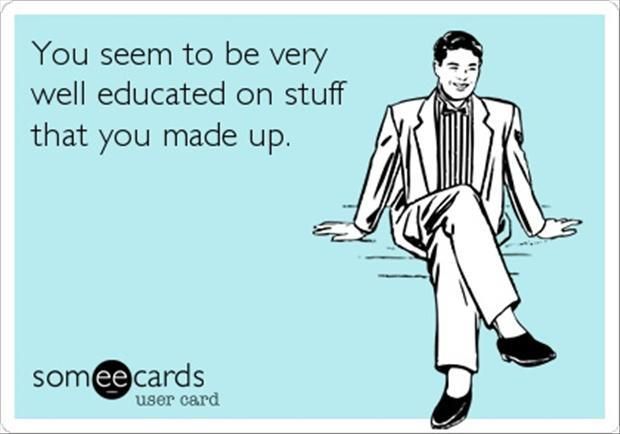 Most often, their main excuse is: I don't dance well. Why is this self-deception?
Most often, their main excuse is: I don't dance well. Why is this self-deception?
It really doesn't matter how you dance, the authors of The Book of Life, a self-development project, explain. Dance badly, don't even try - sometimes that's exactly what you need. "Dancing" and "dancing well" are two different things, like "rest" and "work". The main thing in the dance is not how you look from the outside, not the admiration of others, but the beneficial effect of the dance itself. Any person by default "knows how" to dance well enough to feel this effect on himself.
Dance is an excellent cardio exercise. Moving to the music, you make all the muscles of the body work, improve coordination, develop a sense of balance, increase endurance, flexibility, and reaction speed. And then, dancing is fun and interesting. It is much easier to train yourself to dance regularly than to get used to jogging.
There are studies showing the positive effects that dance has on the brain.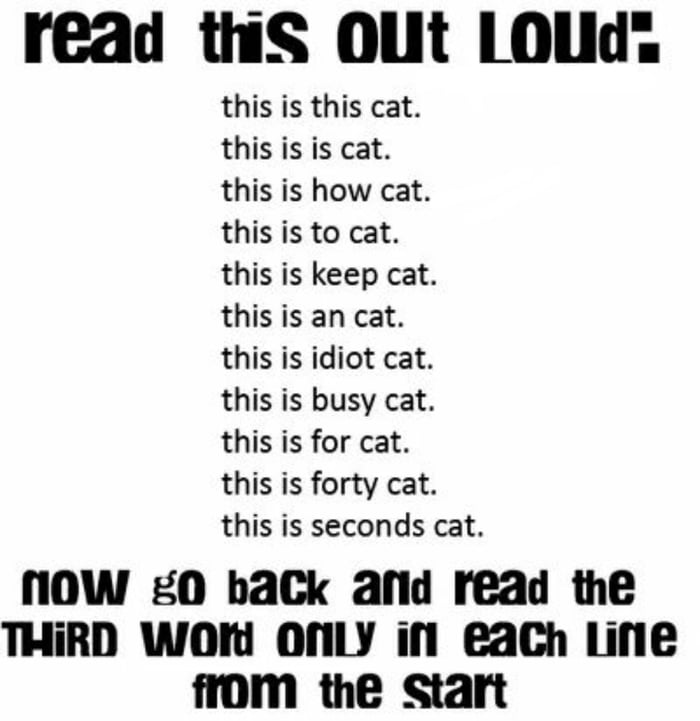 It not only improves mood, but also enhances cognitive functions: recognition of visual stimuli and decision making. That's not all: dancing reduces stress levels by stimulating the production of the "happiness hormone" serotonin. And it contributes to the formation of new neural connections, especially in areas of the brain associated with behavior control, long-term memory and orientation in space. Why do doctors use dance therapy in the treatment of patients with Parkinson's disease? Because she works.
It not only improves mood, but also enhances cognitive functions: recognition of visual stimuli and decision making. That's not all: dancing reduces stress levels by stimulating the production of the "happiness hormone" serotonin. And it contributes to the formation of new neural connections, especially in areas of the brain associated with behavior control, long-term memory and orientation in space. Why do doctors use dance therapy in the treatment of patients with Parkinson's disease? Because she works.
There is something else important. Dance is a multidimensional activity. In addition to the physiological, it also has a psychological dimension. In almost all cultures and at all times, dance was perceived as a ritual, useful not only for the body, but also for the soul. To dance means to do something more significant and deeper than just the rhythmic movement of the feet.
Even among the ancient Greeks, great connoisseurs of rationality, logic and discipline, music and dance were the most important part of their culture.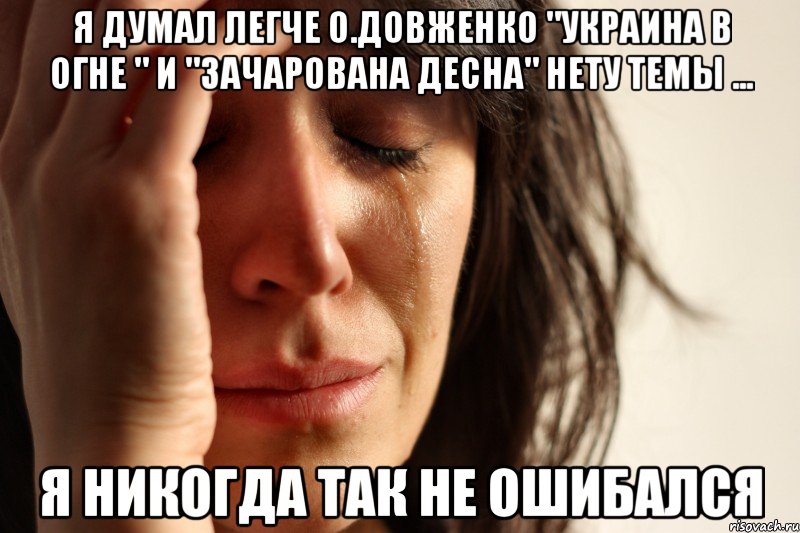 Or rather, there are two hundred dances, for all occasions: from weddings and funerals to religious ceremonies and wars. Why so many? It's hard to give an exact answer right now. Probably, such a variety of dances was an attempt to find a balance between order and chaos. Apparently, the ancient Greeks understood: the more rational and organized a person is, the more important it is for him sometimes to plunge into the element of spontaneity. In this sense, dance was such an important part of life for them that even monuments were erected to especially skilled dancers. But this did not prevent the dance from remaining the most democratic occupation. At numerous ancient festivities, not only the best danced, but everyone who wanted to.
Or rather, there are two hundred dances, for all occasions: from weddings and funerals to religious ceremonies and wars. Why so many? It's hard to give an exact answer right now. Probably, such a variety of dances was an attempt to find a balance between order and chaos. Apparently, the ancient Greeks understood: the more rational and organized a person is, the more important it is for him sometimes to plunge into the element of spontaneity. In this sense, dance was such an important part of life for them that even monuments were erected to especially skilled dancers. But this did not prevent the dance from remaining the most democratic occupation. At numerous ancient festivities, not only the best danced, but everyone who wanted to.
Dance gives us the opportunity to bypass the control of our ego and trigger an ancient part of the psyche, for which it is natural not to oppose oneself to the world, but to feel oneself a part of something greater. Perhaps this is what we lack in modern times. Our world, according to some doctors, is experiencing an epidemic of loneliness. And the general self-isolation due to another epidemic only exacerbates the situation.
Our world, according to some doctors, is experiencing an epidemic of loneliness. And the general self-isolation due to another epidemic only exacerbates the situation.
Dance can help us regain a sense of community—reconnect psychologically with other people, the authors of The Book of Life say. So what's stopping us? Fear of "looking like an idiot." How to overcome it? In fact, it’s simple: it’s enough to free yourself from the dictates of the desire to “look solid”. We need to understand and accept that the very essence of the healing dance that unites us with the world is to look as stupid as possible. The dumber the better. Isolation is no problem for this. Dbrain.io founder Dmitry Matskevich dances online with friends in self-isolation to relieve stress - and no one feels stupid.
“Look worthy”, “inspire respect” are far-fetched constructs. If we discard them, it turns out that there is quite a lot of foolishness in each of us - nature made us that way. We secretly cry at night, touch the jambs, break into closed doors, stumble out of the blue when trying to beautifully retire, laugh at ourselves, hiccupping at a crucial moment.
